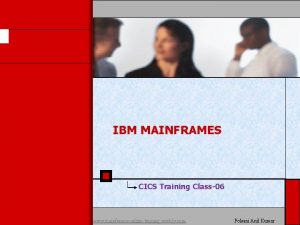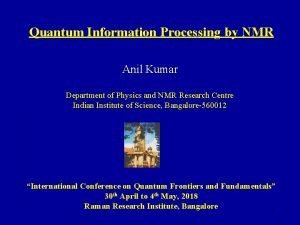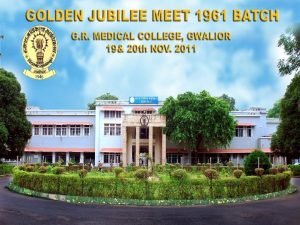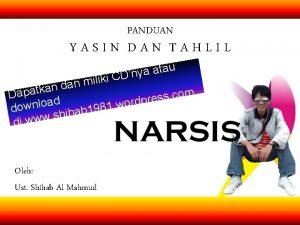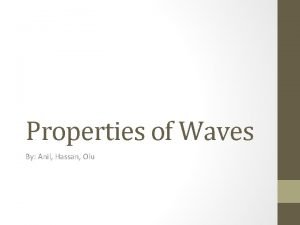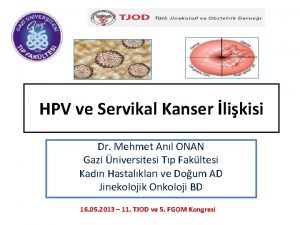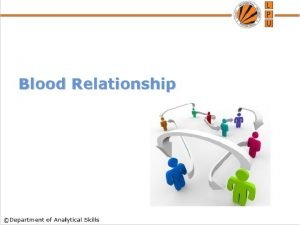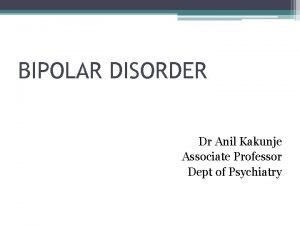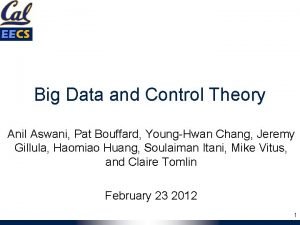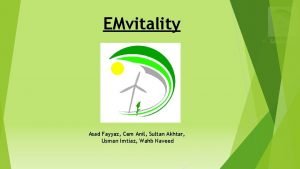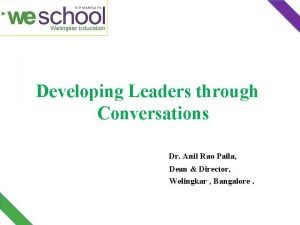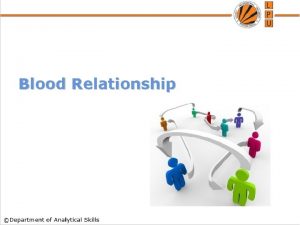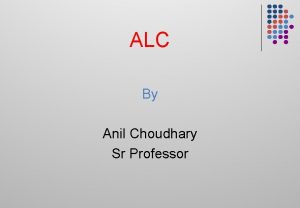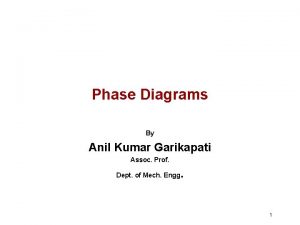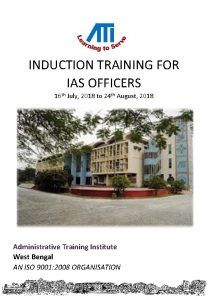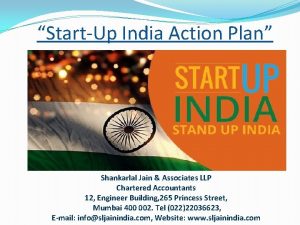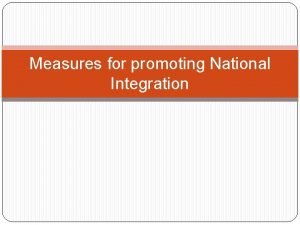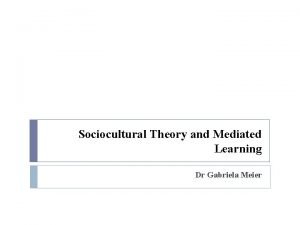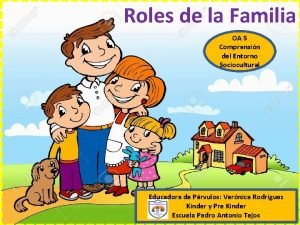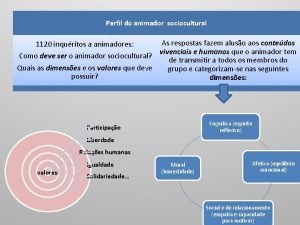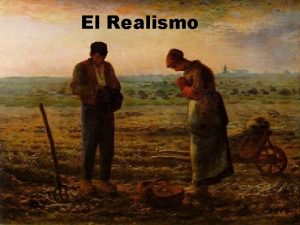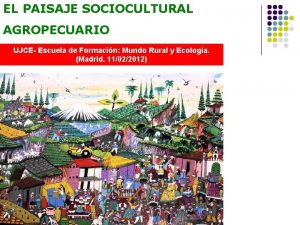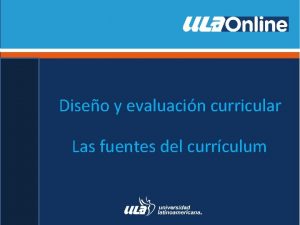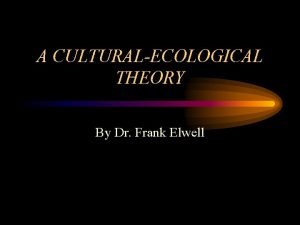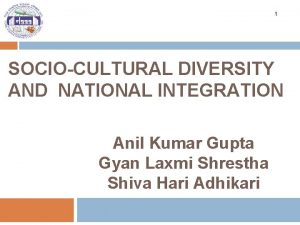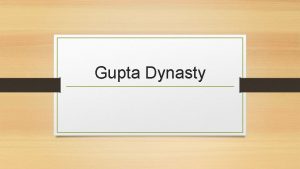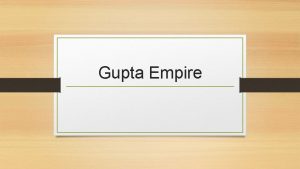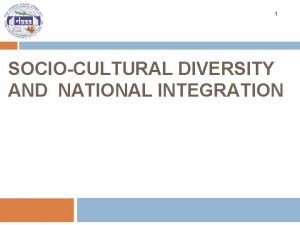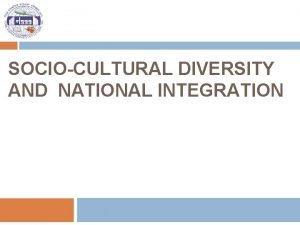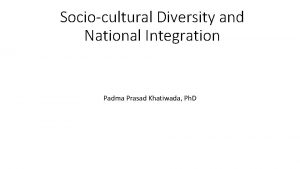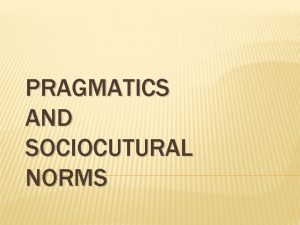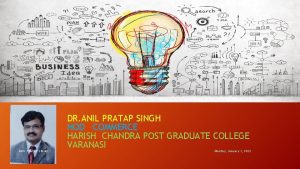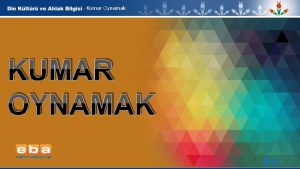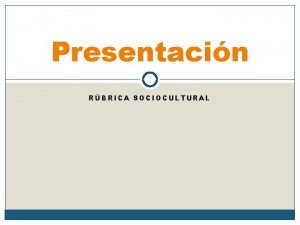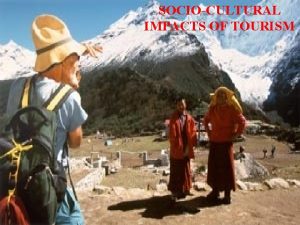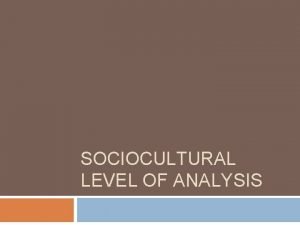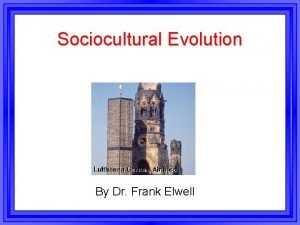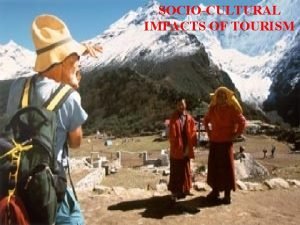SOCIOCULTURAL DIVERSITY AND NATIONAL INTEGRATION Anil Kumar Gupta
















































- Slides: 48

SOCIO-CULTURAL DIVERSITY AND NATIONAL INTEGRATION Anil Kumar Gupta

Coverage 2 Social structure and social systems Socio-cultural diversity profile Diversity and service delivery Diversity as an asset Diversity dynamism Diversity management and national integration Nation, nationality and social bond

Social Structure and Social Systems 3 What is structure? What is system?

Social Structure and Social Systems 4 Social structure refers to: A) statuses and roles B) a value C) the way the units of a group or society relate to one another

Social Structure and Social Systems 5 Which of the following is a unit of the social structure? A) a status B) group, institution, association and organization C) all of the above

Social Structure and Social Systems 6 An organization means A) co-ordination of social relationships B) co-ordination of parts C) certain positions

Social Structure and Social Systems 7 State whether the following statements are true or false: A) A social system is an orderly and systematic arrangement of social interaction B) Social system has no subsystem

Social Structure and Social Systems 8 State whether the following statements are true or false: A) Social system is not based on interaction of plurality B) Social system is unrelated to cultural system C) There is a functional relationship between the parts of a social system

9

10 Socio-Cultural Diversity Profile

Sex Composition 11 Sex Ratio of Nepal 105 106 104 101. 4 102 99. 5 100 98 96. 8 99. 8 97. 3 96 94. 2 94 92 90 88 1952/54 1961 1971 Sources: CBS, 2001 and 2011 1981 1991 2001 2011

Age Composition 12 1991 54. 15 51. 8 42. 2 2001 2011 57 39. 35 34. 9 5. 8 below 15 year 15 -59 year Sources: CBS, 2001 and 2011 6. 5 60+ year 8. 1

Urban/Rural Population 13 Census Year 1961 1971 1981 1991 2001 2011 Urban Centers Urban Pop (%) Rural Pop (%) 3. 6 96. 4 16 4. 0 96 16 6. 4 93. 6 23 33 9. 2 90. 8 13. 9 86. 1 58 17. 1 82. 9 58 Sources: CBS, 2001 and 2011 Metropolitan City = 6 Sub- metropolitan City = 11 Municipality = 276 Rural Municipality = 460 Source: MOFALD, 2017 (www. http: //103. 69. 124. 141/).

Ethnic/Caste Composition 14 Ethnic /Caste Groups 1991 (%) 2001(%) 2011 (%) 16. 05 15. 8 16. 6 Hill Brahmin 13 12. 7 12. 2 Magar 7. 2 7. 1 Tharu 6. 5 6. 8 6. 6 Tamang 5. 8 5. 6 5. 8 Newar 5. 6 5 Kami 5. 2 4 4. 8 Yadav 4. 1 4 4 Musalman Rai Kiranti 3. 5 3 4. 3 2. 8 4. 4 2. 3 Chhetri Sources: CBS, 2001 and 2011

Religion Composition 15 Religion 1991 2001 2011 Hindu 86. 51 80. 62 81. 3 Buddhist 7. 78 10. 74 9 Islam 3. 53 4. 2 4. 4 Kirat 1. 72 3. 6 3. 1 Christian 0. 17 0. 45 1. 4 Sources: CBS, 2001 and 2011

Language Composition 16 Language 1991 2001 2011 Nepali 50. 31 48. 61 44. 6 Maithali 11. 85 12. 30 11. 7 Bhojpuri 7. 46 7. 53 5. 9 Tharu 5. 37 5. 86 5. 77 Tamang 4. 89 5. 11 Newar 3. 73 3. 63 3. 2 Bajjika - 1. 05 2. 99 Urdhu 1. 09 0. 77 2. 61 Doteli - - 2. 97 Sources: CBS, 2001 and 2011

Education Composition 17 Population aged 6 years and above Sex 1991 (%) 2001(%) 2011 (%) Male 54. 5 65. 5 75. 2 Female 25. 0 42. 8 57. 4 Total 39. 6 54. 1 66. 0 Locations Male (%) Female (%) Total (%) Maximum (Kathmandu) 92 80 86 Minimum (Rautahat) 51 32 42 Sources: CBS, 2001 and 2011

Diversity and Service Delivery Attempts made (single attempt or otherwise) to receive services 18 Sources: Nepal National Governance Survey 2017/18 [NNGS,

Diversity and Service Delivery Attempts made (single attempt or otherwise) to receive services 19 Source: NNGS, 2017/18

Diversity and Service Delivery Attempts made (single attempt or otherwise) to receive services 20 Source: NNGS, 2017/18

Diversity and Service Delivery 21 People’s perception on accessing services Source: NNGS, 2017/18

Diversity and Service Delivery 22 People’s perception on accessing services Source: NNGS, 2017/18

Diversity and Service Delivery 23 People’s perception on accessing services Source: NNGS, 2017/18

Diversity and Service Delivery 24 People’s perception on service providers Source: NNGS, 2017/18

Diversity and Service Delivery 25 People’s perception on service providers Source: NNGS, 2017/18

Diversity and Service Delivery People’s perception on service providers 26 Source: NNGS, 2017/18

Diversity and Service Delivery People’s perception on integrity and accountability environment in government office 27 Source: NNGS, 2017/18

Diversity and Service Delivery People’s perception on integrity and accountability environment in government office 28 Source: NNGS, 2017/18

Diversity and Service Delivery People’s perception on integrity and accountability environment in government office 29 Source: NNGS, 2017/18

Diversity and Service Delivery 30 People’s perception on level of satisfaction Source: NNGS, 2017/18

Diversity and Service Delivery 31 People’s perception on level of satisfaction Source: NNGS, 2017/18

Diversity and Service Delivery 32 People’s perception on level of satisfaction Source: NNGS, 2017/18

Diversity and Service Delivery Prevalence of bribing among those who accessed a public service Percentages of those who were asked for and/or paid a bribe, or who have a family member who was asked for and/or paid a bribe, in the last 12 months among those who accessed a public service Source: NNGS, 2017/18

Different Schools of Thought 34 Diversity as a problem Diversity as an asset Exercise �Work in group/pair �You will get 7 minutes �Present in plenary

Diversity Dynamism 35 Game: D & D

Diversity Management and National Integration 36 Exclusion: an obstacle to open and healthy communication between different ethnic, linguistic, religious, and cultural group Is inclusion the ending of exclusion, or much more than that. Assimilation/Integration Exclusionary inclusion, assimilationist inclusion and multicultural inclusion

37 Diversity Management and National Integration Representation and participation Improving social and economic life of people in social and political system Equitable society where economic equality, prosperity, and social justice prevail Recognition of diverse cultures and group identities Integration by changing the existing

38 Nation, Nationality and Social Bond Dividers Vs Connectors

39 Nation, Nationality and Social Bond System and Institutions Vs System and Institutions

40 Nation, Nationality and Social Bond Attitudes and Actions Vs Attitudes and Action

41 Nation, Nationality and Social Bond Different Values and Interests Vs Shared Values and Interests

42 Nation, Nationality and Social Bond Different Experiences Vs Common Experience

43 Nation, Nationality and Social Bond Symbols and Occasions Vs Symbols and Occasions

44 Nation, Nationality and Social Bond Political Economic Psychologic al Social

Issues in National Integration 45 Under-representation Discrimination on different ground Illiteracy Regional disparities/uneven development process Social inequalities Regionalism International domination and ideology

Factors Promoting National Integration “united we stand but divided we fall" 46 Constitutional provisions Governmental initiatives Democracy Nation, nationality and binding factors � Strengthening state-people interface � Strengthening multiculturalism � Reducing inequality – vertical and horizontal � Promoting balanced development � Respecting social and cultural diversity

47

48 Thank you
 Anil kumar polsani
Anil kumar polsani Product operators
Product operators Dr pulin kumar gupta
Dr pulin kumar gupta Cholegogue
Cholegogue Pyelomyotomy
Pyelomyotomy Dr adarsh kumar national heart institute
Dr adarsh kumar national heart institute What is ecosystem biodiversity
What is ecosystem biodiversity Ecosystem jigsaw activity
Ecosystem jigsaw activity Three dimensions of corporate strategy
Three dimensions of corporate strategy Make or buy continuum
Make or buy continuum Simultaneous integration example
Simultaneous integration example Sunderlal bahuguna quotes
Sunderlal bahuguna quotes Wa akhiru da'wahum anil
Wa akhiru da'wahum anil Toppcluster
Toppcluster Anil hassan
Anil hassan Anil jagasia
Anil jagasia Mehmet anıl onan
Mehmet anıl onan Anil khamis
Anil khamis Blood relation definition
Blood relation definition Dr anil kakunje
Dr anil kakunje Anil aswani
Anil aswani Anil vachani
Anil vachani Anil sultan
Anil sultan Paila dean
Paila dean Introducing neeta anil said
Introducing neeta anil said Dr anil choudhary
Dr anil choudhary Calister
Calister Dr adrian pearce
Dr adrian pearce Alankrita singh ips
Alankrita singh ips Dr anil mehndiratta goa
Dr anil mehndiratta goa Anil dua
Anil dua Anil chawla law associates llp
Anil chawla law associates llp Dr anil kulkarni
Dr anil kulkarni Kintranet
Kintranet Promoting national integration
Promoting national integration Sociocultural theories of learning
Sociocultural theories of learning What is a socio-cultural context explain briefly
What is a socio-cultural context explain briefly Modelo vals 2
Modelo vals 2 Los roles de los miembros de la familia
Los roles de los miembros de la familia Sociocultural pestel
Sociocultural pestel Perfil do animador sociocultural
Perfil do animador sociocultural Cultural materialism anthropology
Cultural materialism anthropology Contexto social del siglo xix
Contexto social del siglo xix Contexto social de romanticismo
Contexto social de romanticismo Contexto historico realismo
Contexto historico realismo Sociocultural
Sociocultural Fuente institucional del curriculum
Fuente institucional del curriculum Rogoff barbara
Rogoff barbara Sociocultural system
Sociocultural system
